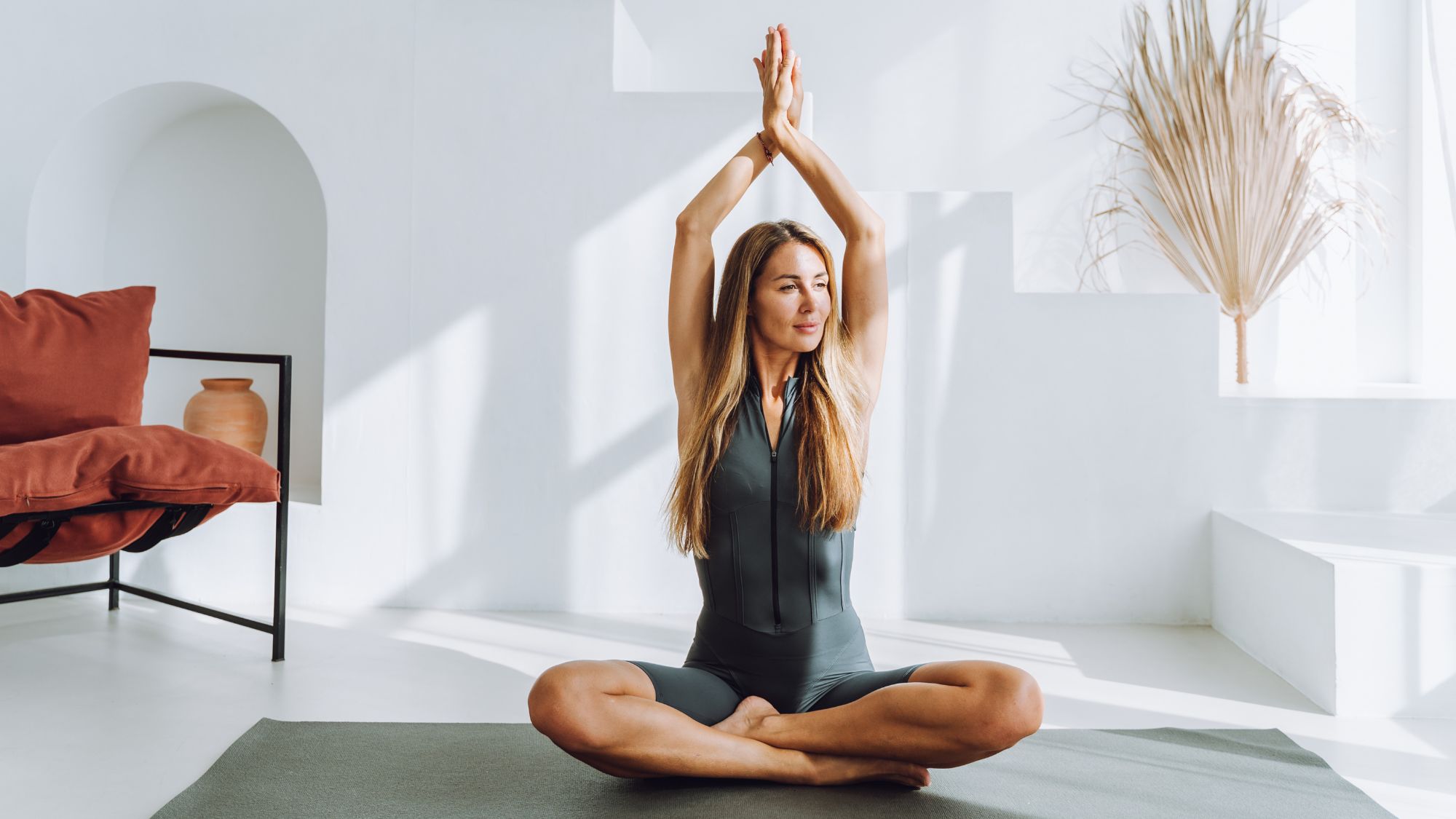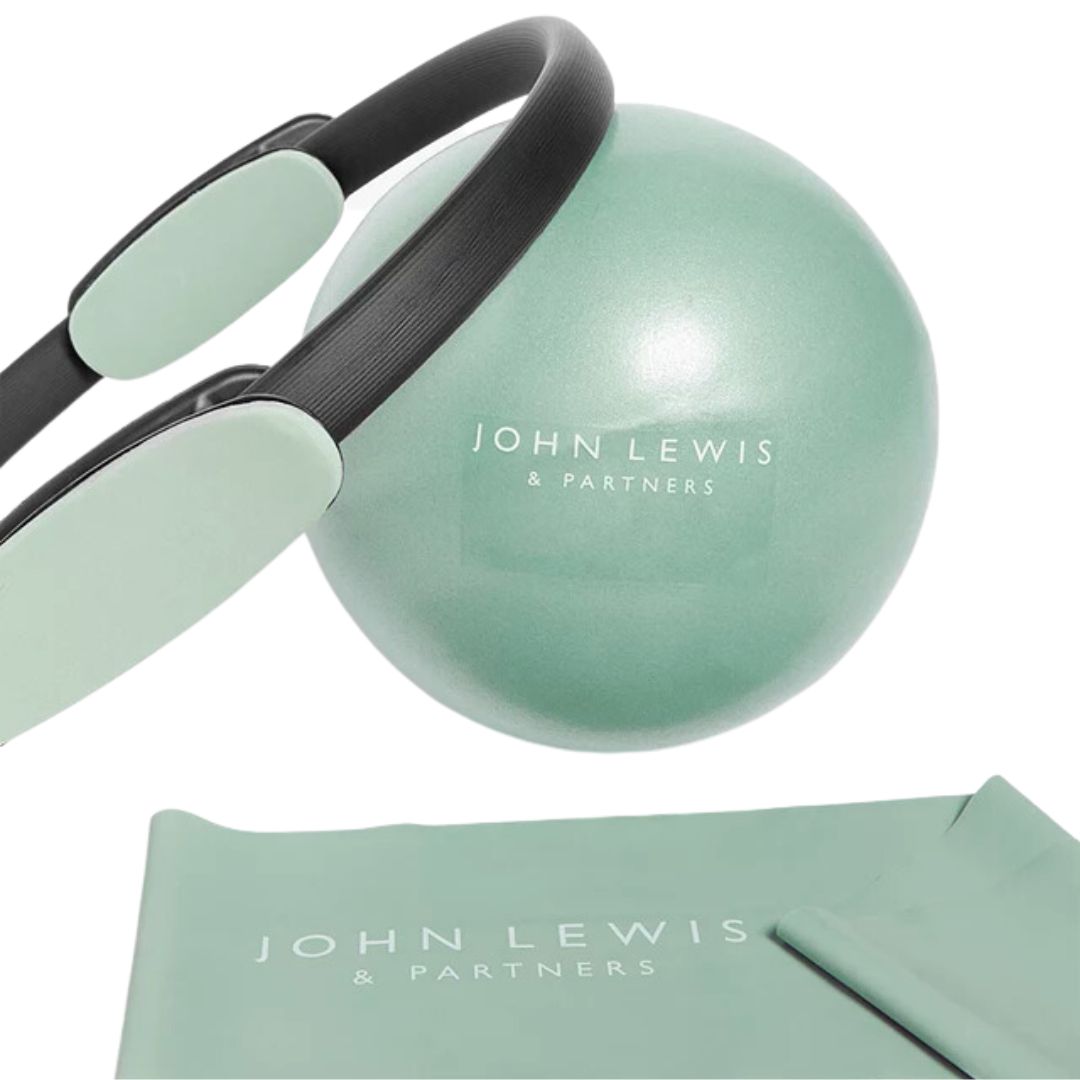Pilates for back pain promises to ease tightness and tension - 5 simple workouts to try tonight
It turns out Pilates really is the gift that keeps on giving...


If you're Googling "Pilates for back pain," chances are you've read about the myriad of wellbeing benefits of this low-impact workout. One of the standout wellness trends of 2023, Pilates is well and truly having a moment - not only does it promise to boost muscle tone and metabolism, but ease back aches and pains, too.
According to the World Health Organisation (WHO), lower back pain is something around 619 million people suffer from globally. Sadly, it’s a condition that’s only estimated to get worse, with the total number of cases expected to increase to 843 million by 2050.
Before we delve deeper into this issue and just how Pilates workouts promise to help, it's important to flag that there are two types of back pain: non-specific and specific. The WHO says non-specific is often brought on due to stress or a sedentary lifestyle while specific back pain is caused by a certain disease or condition, like sciatica or a slipped disc.
More research is needed, but here's the good news: there is a growing bank of evidence, like this small 2013 review and this 2021 paper, to suggest that one of the benefits of Pilates is that it can help to "reduce pain and disability in patients with low back pain" and reduce "pain intensity and functional limitations" for those who suffer chronic low back pain.
If you're new to the workout, our guide to Pilates for beginners will come in handy. To find out more about Pilates for back pain, how it helps and the other benefits it can bring, we’ve spoken to an expert and done the research so you don’t have to. While you’re here, you might also be interested in trying these lower back pain exercises to help you build strength, stability and flexibility in your back.
Don't miss our guides to Pilates exercises, Reformer Pilates and the viral Pilates wall workout, while you're here.
Pilates for back pain promises to ease tightness and tension - your guide
What is Pilates for back pain?
The brainchild of Joseph Pilates, originally this slow and low-impact workout was designed as a form of rehabilitation for the whole body.
Celebrity news, beauty, fashion advice, and fascinating features, delivered straight to your inbox!
As Pilates expert and founder of Heartcore, Jessie Blum, explains: "Pilates movements are designed to strengthen and protect key muscles and joints, making our body less prone to injury."
So it makes sense that this form of exercise is now being used to help ease back pain.
Do note, of course: if you are seriously struggling with persistent back pain, it's always wise to speak to your GP to find out the underlying cause of the issue.
How does Pilates for back pain work?
For the back specifically, Blum says: “Pilates works by strengthening the core (which is the complex community of deep muscles around your spine, abdominals, pelvis and back – acting as a scaffolding holding you together), improving posture, and releasing tension to help heal, prevent, and teach a deeper understanding of the connection between our mind and body.”
It’s because of this, according to Blum, that Pilates has the power to go way beyond being just a prescription for back pain. “Pilates could be considered the antidote to our modern way of living,” she says. “We spend a lot of time sitting, unaware of our posture, likely hunched over at desks, in transit, watching TV or eating meals,” Blum explains.
This causes the muscles around our chest, neck, and shoulders to shorten and become tight, while the muscles in our back lengthen and become weak. “This leads to imbalances in the body, discomfort, and other related issues like poor breathing patterns,” Blum shares.
That’s where Pilates steps in to incorporate a range of movements, like rowing, that naturally includes deep stretches and contractions, balance, coordination, and core activation. “It’s a highly effective approach to training and can quickly eliminate mild forms of back pain with lasting results,” Blum adds.
What are the benefits of Pilates for back pain?
There’s a shedload of benefits of Pilates which is probably one of the reasons why this workout is so popular right now.
Firstly, Pilates exercises work to strengthen and tone all the major muscle groups in your body, your core included. “We focus on mindful breathing in Pilates to help activate the core and initiate each movement from our centre, our powerhouse, as well as inviting more space into the body, the muscles and tendons around the spine and ribcage,” Blum explains.
Of course, building a stronger core is beneficial for your balance but it also stops your back from picking up the slack. As Blum tells us: “Building and maintaining a strong core helps to protect your body, and particularly the spine in everyday tasks like lifting, carrying, sitting, performing other activities and sports.”
As research has proven, Pilates also promises to improve your posture and flexibility which, unfortunately, tends to worsen with age. “Consistent stretching helps to loosen tight ligaments, tendons, and muscles, increasing the range of motion, creating more length in our body and joints and alleviating overall pain and tightness in the lower back,” Blum says.
Plus, an additional perhaps less obvious benefit, is the ability Pilates has to lower stress levels. “We know that back pain can be caused by stress. But creating safe spaces to practise drawing the mind into the body through guided, deep, slow breathing exercises can help ease and even eliminate the physical pain we experience in the form of a tight neck, headache and/or back pain over time.”
But, as is the case with all forms of exercise, whether it’s one of the many types of yoga, weight training or running: consistency and commitment are key to reap the benefits Pilates can bring for your back (and the rest of your mind and body) long-term.
5 Pilates for back pain flows to try today
To help you say goodbye to back pain, we’ve compiled a range of expert-approved Pilates flows to help you ease pain in this area. So roll out your gym mat, set aside ten minutes to half an hour, and prepare to feel some relief.
1. Pilates for back pain relief exercises
Why? "Whether you have a tight back, back injuries or pain, this Pilates for back pain routine will give you back stretches and strengthening exercises to help," physical therapist and Pilates teacher Jessica Valant says.
What? This slow workout focuses on all the muscles surrounding your lower back, like your hips, glutes and your core, to help stabilise this area and provide some relief. You'll need a small pillow or a small Pilates ball to complete some of these exercises.
How long? 10 minutes.
2. Pilates for lower back pain
Why? "Doing this session regularly will help ease the pain of a tense back and shoulders and it is one I recommend to anyone who has general back pain," Rachel Lawrence, AKA The Girl With the Pilates Mat says.
What? A super gentle session that works to ease tension, and stretch your lower back, hips and muscles in the leg. Expect to see cobra poses, cat/cow and bird dog.
How long? 20 minutes.
3. Mat Pilates for generalised back pain
Why? "This is a session you can do time and time again whenever you feel the need to take care of your back," Lawrence explains.
What? Another Lawrence special, the Pilates instructor takes you through a mix of strengthening exercises for your core, hips, legs, arms and shoulders. It also includes stretches like glute bridges to build muscle in your glutes and release tension in your back.
How long? 20 minutes.
4. Pilates for back care
Why? "This gentle Pilates class is for anyone looking to strengthen, mobilize and stretch out the areas associated with lower back weakness or discomfort," Katja of Pilates & Yoga with Katja says.
What? Got more time to spare? This workout works on mobilising and stretching out tight areas such as your hips, pelvis and back and engaging your deep stomach muscles at the same time.
How long? 30 minutes.
5. Pilates workout for a strong and healthy back
Why? "This Pilates workout will strengthen your back and work your core to keep your back healthy," certified Pilates and yoga instructor Nicole McPherson of Move with Nicole says.
What? Using stretches like bird dog and core activation movements, like a seated spine twist, side plank and a mermaid stretch, this intermediate workout aims to lengthen your spine and strengthen your mid-region.
How long? 35 minutes.
Shop MC UK'S go-to equipment for back pain relief
What are the best Pilates exercises for back pain?
Bird dog, single knee to chest crunches and a low lunge with a hamstring stretch are all great exercises commonly used in Pilates to help ease back pain, according to expert Jessie Blum, founder of studio Heartcore.
Blum says the bird dog, which involves coming into a tabletop position and extending your opposite arm to leg and repeating on both sides, helps with core activation, posture alignment, balance, spinal articulation and deep breathwork.
While the low lunge with hamstring stretch works at opening hips, stretching hamstrings, lengthening your lower back, boosting balance, and helping with spinal articulation and deep breathwork.
And, as for the single knee-to-chest crunch, this helps to loosen up tight hips, hamstrings and core activation.
Along with setting some time aside to practise these exercises, you could also try yoga for lower back pain poses or master these back exercises to help strengthen this area.

Rebecca, or Becks, is a freelance journalist with more than ten years of experience in the industry. She specialises in all things health and lifestyle and has written for a number of brands including Women's Health, Stylist, the Evening Standard, Good Housekeeping, The Telegraph, Live Science, Tom's Guide and Fit&Well. Becks also writes copy for a number of brands and small businesses.
When she's not weight training, tracking down the best gym leggings, reading a book or at her desk typing away, you'll find her in the kitchen perfecting a new recipe or bake.







